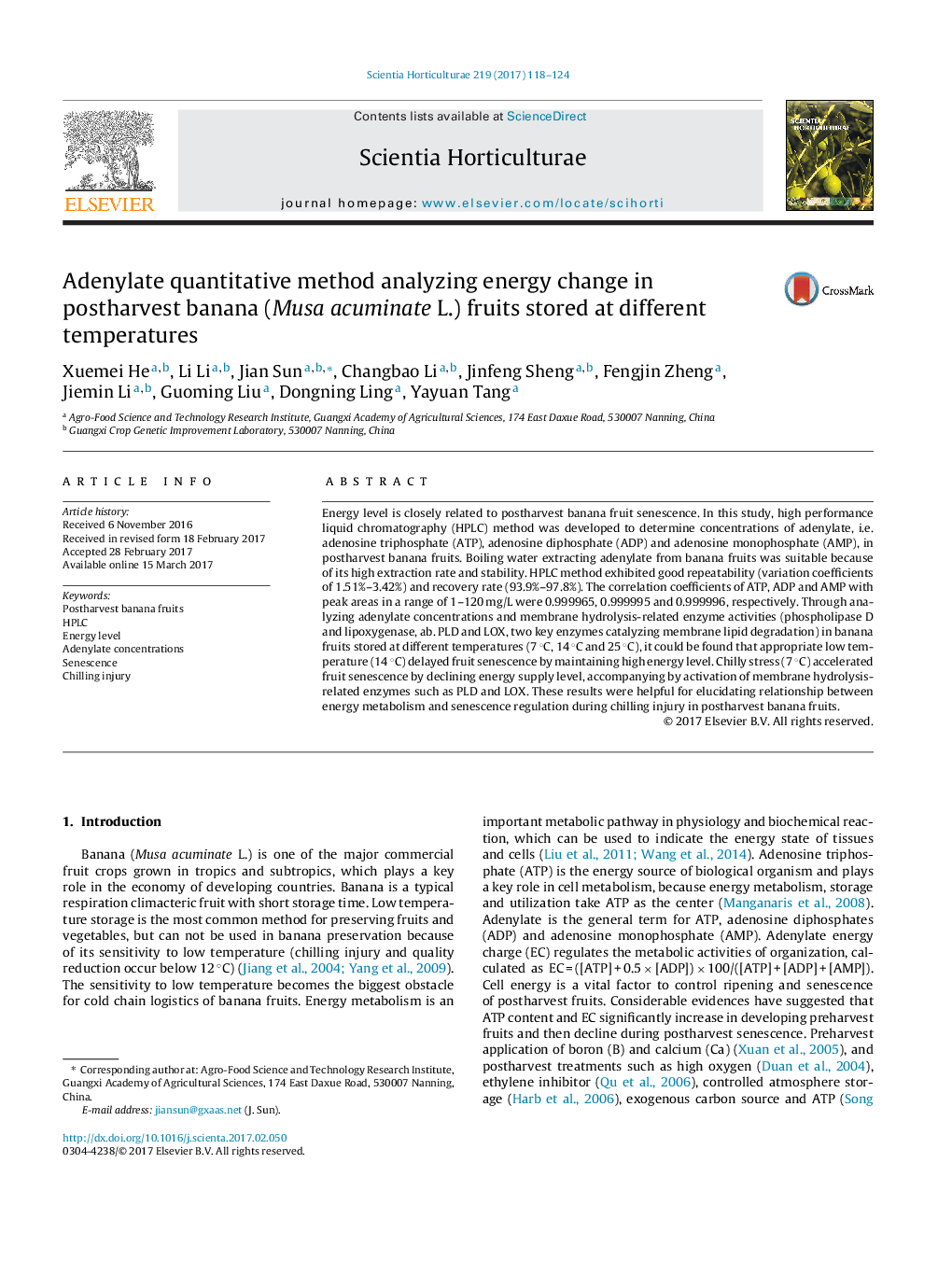| کد مقاله | کد نشریه | سال انتشار | مقاله انگلیسی | نسخه تمام متن |
|---|---|---|---|---|
| 5769718 | 1628779 | 2017 | 7 صفحه PDF | دانلود رایگان |

- Suitable HPLC method analyzing adenylate in postharvest banana fruits was developed.
- Boiling water extracting adenylate from banana fruits was appropriate.
- Appropriate low temperature maintained high energy level in postharvest banana fruits.
- Chilling injury declined energy supply level in postharvest banana fruits.
Energy level is closely related to postharvest banana fruit senescence. In this study, high performance liquid chromatography (HPLC) method was developed to determine concentrations of adenylate, i.e. adenosine triphosphate (ATP), adenosine diphosphate (ADP) and adenosine monophosphate (AMP), in postharvest banana fruits. Boiling water extracting adenylate from banana fruits was suitable because of its high extraction rate and stability. HPLC method exhibited good repeatability (variation coefficients of 1.51%-3.42%) and recovery rate (93.9%-97.8%). The correlation coefficients of ATP, ADP and AMP with peak areas in a range of 1-120 mg/L were 0.999965, 0.999995 and 0.999996, respectively. Through analyzing adenylate concentrations and membrane hydrolysis-related enzyme activities (phospholipase D and lipoxygenase, ab. PLD and LOX, two key enzymes catalyzing membrane lipid degradation) in banana fruits stored at different temperatures (7 °C, 14 °C and 25 °C), it could be found that appropriate low temperature (14 °C) delayed fruit senescence by maintaining high energy level. Chilly stress (7 °C) accelerated fruit senescence by declining energy supply level, accompanying by activation of membrane hydrolysis-related enzymes such as PLD and LOX. These results were helpful for elucidating relationship between energy metabolism and senescence regulation during chilling injury in postharvest banana fruits.
Journal: Scientia Horticulturae - Volume 219, 17 May 2017, Pages 118-124